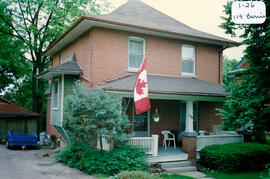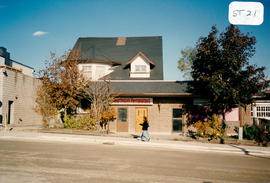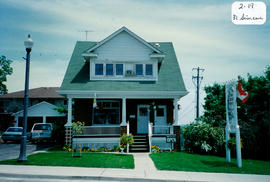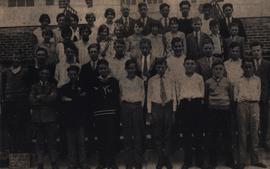- CA BWGPL GJ-HB-2017-03-12-03
- Item
- 1996
Part of George Jackson fonds
The house located mid-block at 119 Barrie St. was one of seven houses begun in 1912 by Lieutenant George Stoddart. When Stoddart went overseas during WWI, the projects were completed by builder Art Saint. This house was built in the Edwardian Classicism style. Hewey Douglas and his wife lived here many years ago. He had a hardware store on the north side of Holland Street (west of the bank).
The two-storey building has a simple, formal composition. The square form is topped by a bell- cast, hip roof. A hip roof on the large, classically-inspired entrance porch is supported by half columns on brick piers. Simple, double-hung windows are balanced within the façade. The side-bay projection (with wood siding) adds visual interest. The rest of the exterior is solid, smooth brick construction with simple details. According to the 2000 inventory, the house has been maintained well. (1, 2, 3)
George Jackson






